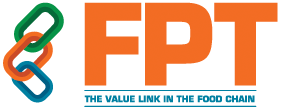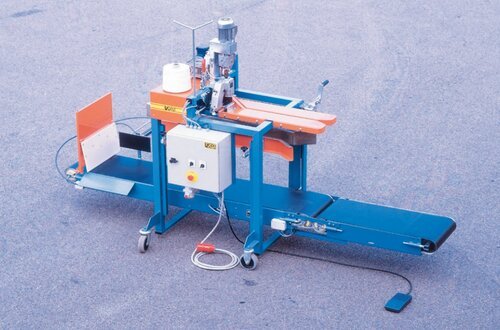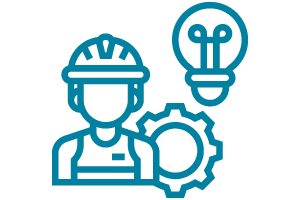Palletizing Machine
A Palletizing machine is an automated material handling system that stacks and orients multiple distinct goods into a single load for easier handling, storage, and transportation. Palletizers are typically incorporated into a larger packaging process that includes weighing, counting, sorting, labelling, metal detection, and wrapping.
Some of these functions may be included in the palletizing machine itself, while others may be handled by separate machinery. Palletized goods make use of the unit load principle. The assemblage of items integrated for effective handling is referred to as a unit load.
A Palletizing machine is a machine that stacks cases of goods or products onto a pallet in an automated manner. Manually stacking boxes on pallets is time-consuming and costly, and it may also put workers under a lot of stress.
Palletizing machines come in a variety of shapes and sizes, including row-forming palletizers, which were first developed in the early 1950s. Loads are organised on a row-forming area before being relocated to a different location where layer formation takes place in row-forming palletizing applications. This method is repeated until a whole layer of goods and items is ready to be loaded onto a pallet.
Moving a huge, one unit rather than multiple little individual pieces is faster and more cost-effective. Finished items aren't made or meant to be handled or sent separately. These are normally packed into boxes, cases, trays, and crates, which are then joined together and supported by pallets or roll cages to form a single unit. The former are known as secondary unit loads, whereas the latter are referred to as tertiary unit loads.
The Palletizing machine stacks the products into a pallet, hence the name. Pallets are flat, sturdy constructions constructed of wood, plastic, paper, or steel that are used to transport goods. Forklifts and hand pallet trucks employ notches or holes in them to lift and move the cargo. These apertures designate a pallet as a two-way or four-way forklift entrance. Pallets with an area of roughly a square metre can hold loads of up to one tonne. The typical pallet dimensions are listed below.
A Palletizing machine is a machine that stacks cases, bags, packages, trays, and bundles of items or products onto a pallet in an automated manner. Palletizing is the process of putting things on pallets and securing them, generally after a production line.
Palletizing machines are useful for high-volume transportation. Palletizing machines ensure load stability, accuracy, and speed of operation. They also allow many loads to be moved at the same time. Hand-placing boxes on pallets are time-consuming and expensive. It can also place a lot of pressure on employees.
The row-forming machine was invented in the early 1950s to get away from this procedure. On the pallet, the row-forming machine created perfect rows of merchandise. Palletizing has greatly improved as computers and robots have advanced. More labour and control might be handled by the machine itself. Palletizers were able to handle a wider range of products, including objects like bottles, which would be difficult and expensive to palletize by hand.
Types of Palletizing Machines
Conventional and robotic palletizers are the two primary types of palletizing machines. At both high and low elevations, both can get goods. Low altitudes are normally 30" to 36", whereas high heights are often 84" to 124". Palletizing machines are then classified as either floor- (low-) level or high-level palletizers.
Conventional
The infeed level on these palletizing machines ranges from 30" to 36". A turning device or conveyor orients the product as it passes through the infeed conveyor before sending it onto the row formation region. Until a row is completed, products are positioned on the row formation area. After that, the row is pushed onto the layer-forming region. It is moved forward to the stripper plate once a full coating has been produced. The items are then put onto the pallet or preceding layer after being elevated or lowered. During the load-building process, the stack stays static.
This procedure is repeated until the pallet load is finished. The pallet is then placed on the pallet discharge conveyor. Typically, the discharge level is at 18. Floor-level palletizing machines are less costly and easier to build, and they take up less room on the floor than high-level palletizers. Because the majority of the machine's parts are accessible from the ground level, maintenance is quicker and easier. In addition, because most moving parts are at eye level, an operator can quickly observe the machine's performance. Because there is no change in the elevation of the infeed conveyor, floor-level palletizers are suitable for linking packers and sealers with the remainder of the packing line.
The infeed level on these palletizing machines is 84" to 124" or higher. The product is conveyed by the infeed conveyor to a turning device or conveyor, which spins the product into the proper orientation before it is pushed to the row-forming region, similar to floor-level palletizers. Products are positioned till a row is complete once again. After that, the row is relocated to the layer-creating area. The layer is ready to be inserted into the pallet or stack once it has been constructed. For each layer placed on the pallet, the palletizer elevates or lowers the stack. Its key advantage over low-level palletizers is its ability to raise and lower the stack. After that, the completed stack is lowered to the discharge conveyor.
A high-level palletizing machine's discharge elevation is usually between 18" and 30". In most cases, an elevated operator's platform is built in tandem with the machine. When there is ample room for an inclined conveyor and the packer and sealer are positioned at a distance, high-level palletizing equipment is employed. Compared to floor-level palletizers, high-level machines offer a greater throughput per unit of machine size, allowing for more efficient use of floor space. Regardless of the packer or sealer discharge elevation, high-level palletizers are employed for throughputs of roughly 40 to 50 items per minute.
Robotics
Robotic arms operate the end effector and perform pattern shaping on these palletizing machines. Cartesian, gantry, SCARA, and articulated robotic palletizers were the different types. Each variety has a different range of motion and flexibility. The term Cartesian comes from the fact that this sort of palletizing machine features an end-of-arm tool that can move in three dimensions of space, or the Cartesian axes X, Y, and Z. Its mechanical construction is made up of beams and a telescoping mast that is often controlled by servo motors.
This robotic palletizer is sluggish and only works with items that are the same weight and size. This is the most affordable robotic palletizer, capable of single-line rates of up to 10 items per minute. An end effector assembly is installed on a beam that may move along one axis in a gantry palletizing machine. The beam can travel in the X-Y plane because it moves on another axis.
The end effector assembly can be a telescopic or articulated arm that can fold or extend vertically to move along the Z-axis or up and down. Because movement is linear along the Cartesian axes, gantry palletizers are sometimes known as Cartesian palletizers. They can pick and position objects, although they are slower than Cartesian robots. Furthermore, these devices are often bigger and hence more costly. The capacity to carry greater loads is an advantage of employing these sorts.
Palletizing machines for bags are designed to assist you in increasing production rates, enhancing pallet load quality, and preventing employee accidents. As a result, these devices are extensively employed by businesses of all sizes who want to reduce the danger of employee harm from repetitive manual bag stacking or enhance output without raising labour expenses.
The packaging system is available in several configurations that cover a wide range of applications in terms of patterns, speed, and format type. Picking up and depositing boxes from the bottom ensures safer and more smooth handling without compromising the integrity of the box closure. Additional choices can be connected to the end of the manufacturing process, preparing your pallet for storage or transport, to acquire a comprehensive solution.
Our Principal
EMVE Sweden in association with Kiron Food Processing Technologies offers a complete Palletizing Machine needs Solution For your Business. EMVE Sweden combines significant knowledge with cutting-edge technology to create flexible and standardized components from which it can build everything from individual machines to fully customized manufacturing lines.








